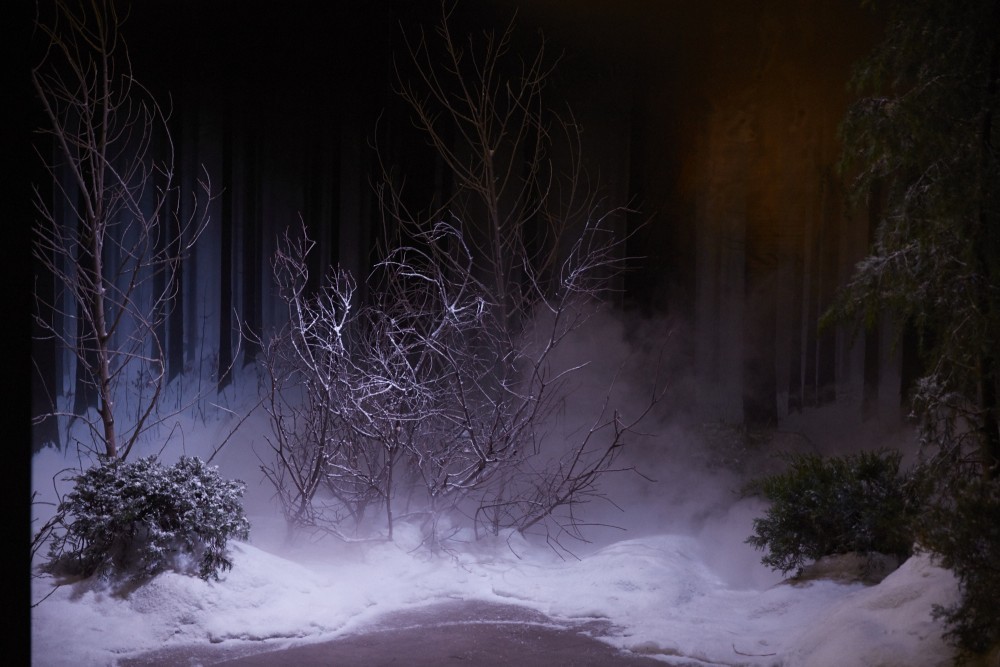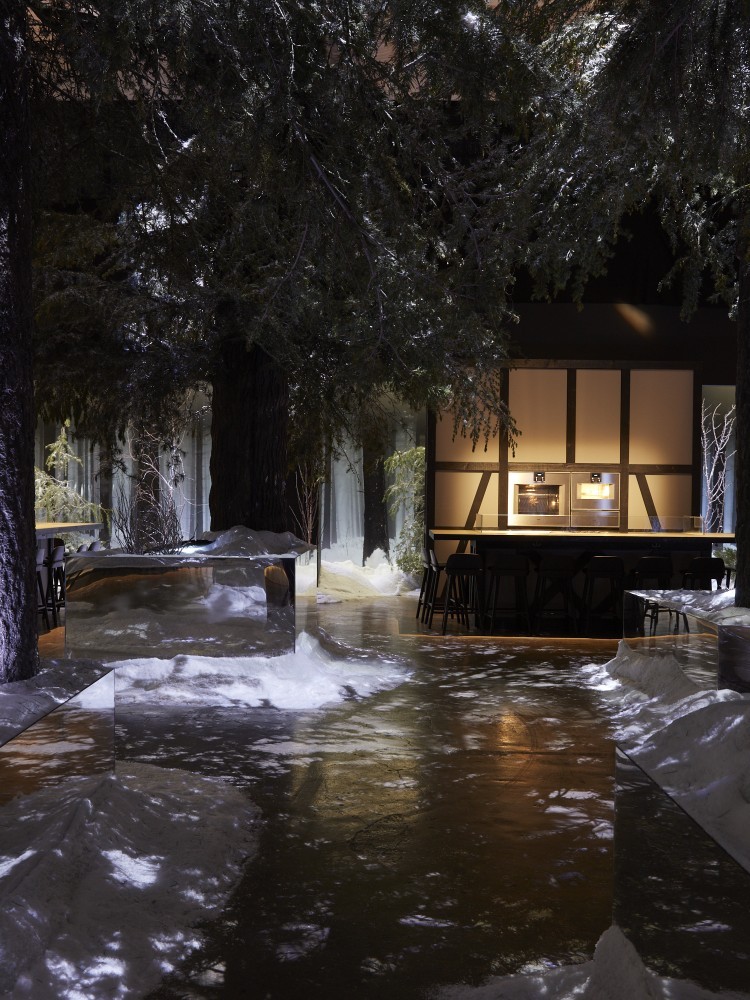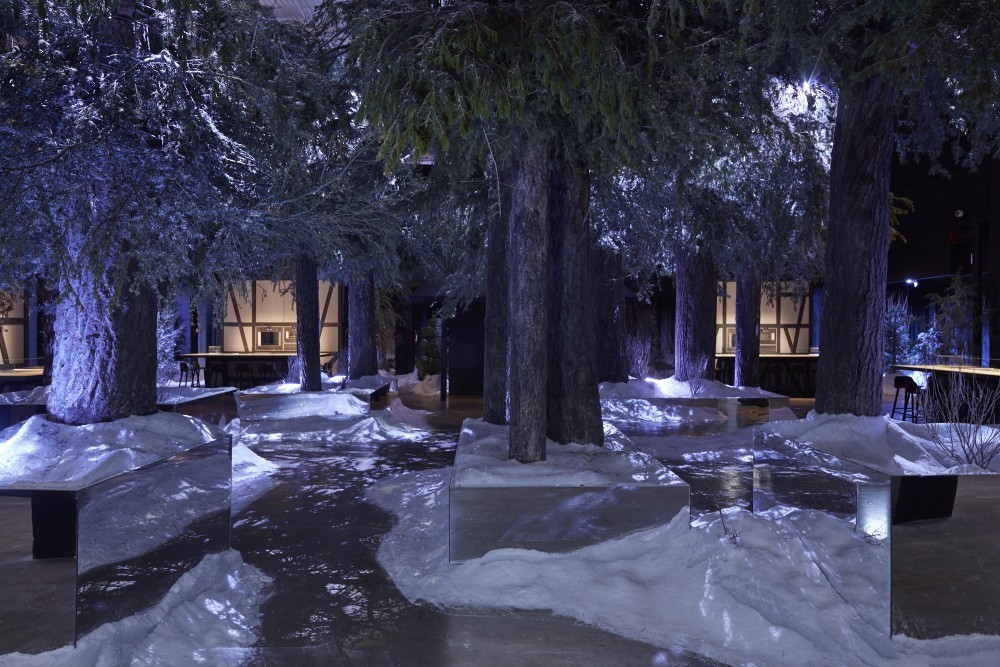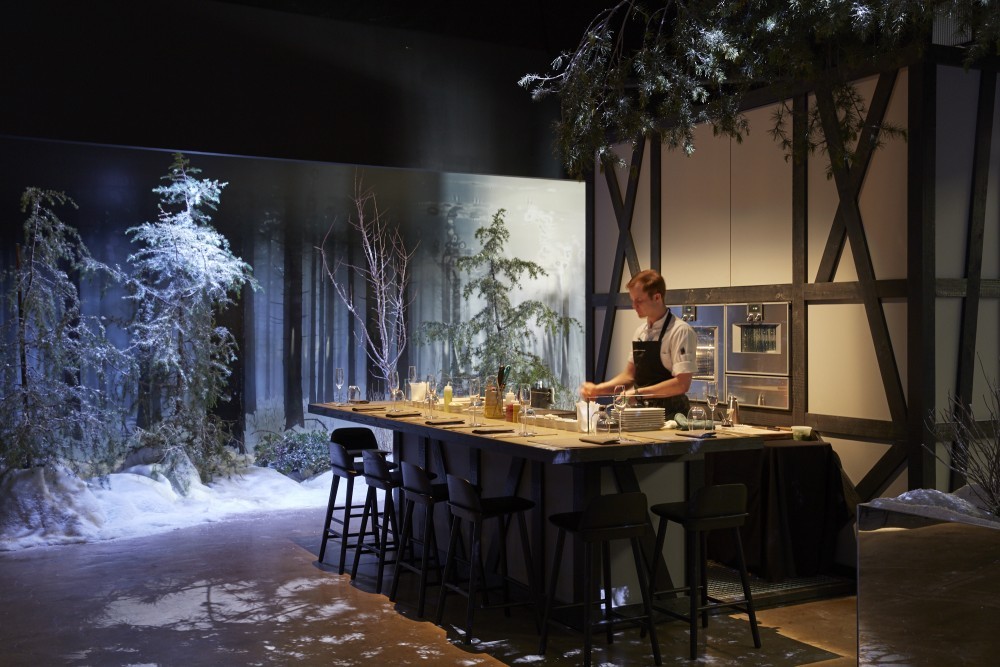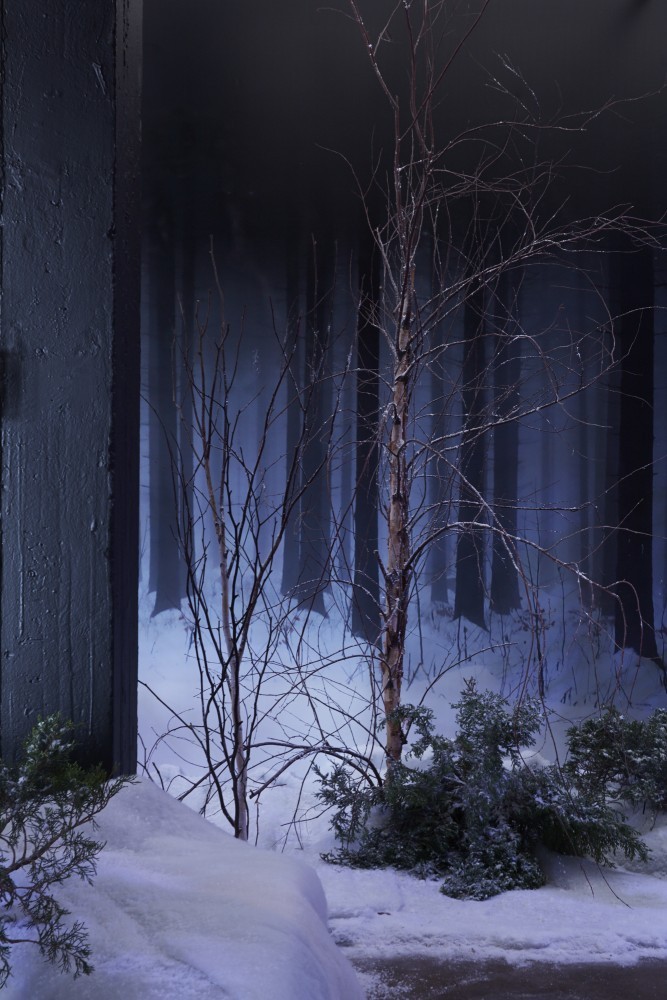BLACK FOREST BABYLON: AN Otherworldly Dinner Party In Los Angeles
From Thomas Mann to Billy Wilder, Los Angeles has a long history with German expats, but — still — what a shock to find that the Black Forest had relocated to La La Land, as well (if only for three nights). From the 21st until the 23rd of May, the 11th-story of the industrial Cooper Building, a 1927-built fashion warehouse, transformed into the absinthe-spiked landscape of a Brothers Grimm afterparty. From 22,000 square feet of minimal concrete floors, and between clear views across post-card Los Angeles, grew a thick canopy of 22-ft tall pine trees, covered by a white powder of very believable snow. This wild concept, called Restaurant 1683, is the second iteration of a traveling invite-only woodland dinner party by Gaggenau, the German manufacturer of super high-end home appliances. The first was in New York, inside the Chelsea Art Beam gallery, though really, again, inside the Black Forest. The next is still but a whisper in a tree hollow, but details to follow soon.

Gaggenau guests enjoying the forest's bounty.
In Los Angeles, Restaurant 1683 is a clever planting of Gaggenau’s roots (its birth in the Black Forest 335 years ago) in a city synonymous with reinvention and novelty. It is the perfect postmodern metaphor for a brand that pairs old-world craftsmanship with modern design and experimental tech. As part of the experience, Gaggenau tells its history through small, sharp displays about metal, glass, and enamel just outside “the forest.” But the brand’s showstopper is the surreal, encompassing woodland installation, at once humorous and poetic, but also a nuanced big deal to pull off.

A fictional scene from the Black Forest, staged in downtown Los Angeles.
Inhabitants of this otherworld include a blacksmith hammering iron (my God, casting is good in L.A.), a roster of VIP guests invited to private dining events in the forest, stylized “Cuckoo girls” in regional Bollenhut costumes (the better to take your selfie with), and Three-Michelin-Starred chef Daniel Humm, who presides over this ethereal happening and created its six-course menu. Though his menu items may sound familiar — from eggs benedict, to spring garlic, and snails — the dishes served are, in fact, as avant-garde as the surroundings, featuring many foods found in a forest, including morels and herbs.
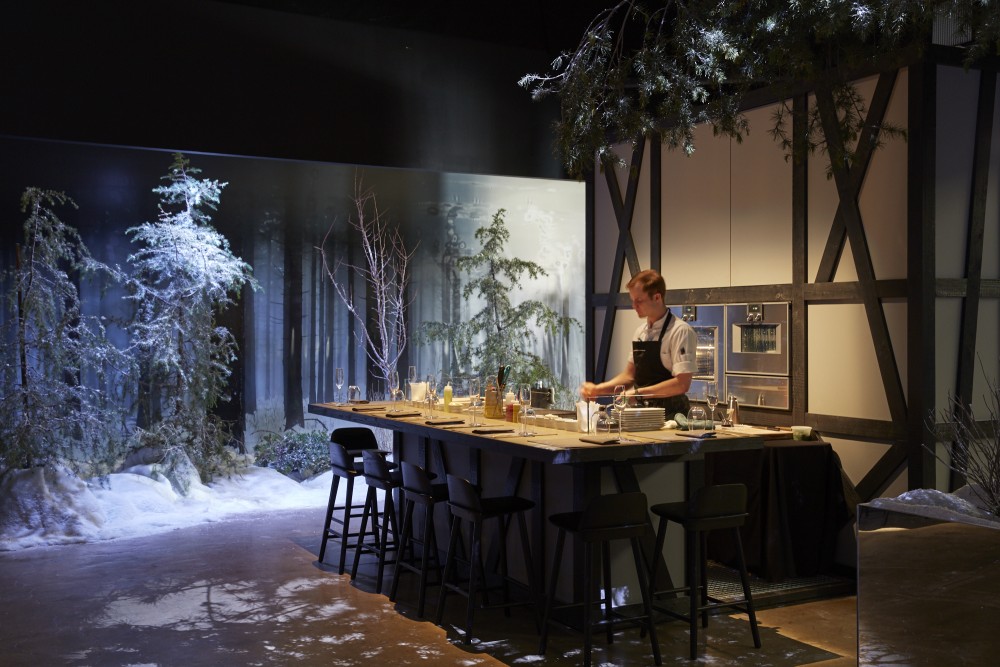
Guests were seated around individual dinner islands where star chef Daniel Humm and his team were serving them eggs Benedict, spring garlic, and snails.
Designed by Hendrik Müller of Munich-based studio einszu33, the installation contains conceptual breadcrumbs for the curious: among them, a largescale Cuckoo Clock and immaculate sound and olfactory design. Audible gusts of howling wind and the spookily accurate scent of forest pine are markers of the perfectionism driving this idea. Sleek, immaculate Gaggenau appliances emerge from the kind of half-timbre walls you really would find in the Schwarzwald. A cocktail bar is composed of a single tree sourced from the region.

A view of Downtown L.A. from the 11th story of the industrial Cooper Building, where Gaggenau staged their Black Forest extravaganza.
The experience inside the forest is underscored by its direct contrast outside. Searching for parking around the Cooper Building is a study in the duality of Los Angeles and its developing downtown. Alongside the steadily increasing number of upmarket shops and cafés, lives the crisis of homelessness on those very streets. Inside the Cooper, the freight elevator that ascends to the 11th floor is already a preamble to the otherworld above, ostensibly light-years away from alfresco reality. Yet, the idea of escaping into emotional make-believe couldn’t be more native to this city of film sets and cinematic dreams. The introduction of an incongruous landscape needs little introduction. Though immersive and uncanny, the Black Forest installation remains connected to Los Angeles, from its aerial views to its choice of central location. An open set of sorts, the installation breaks the fourth wall between winter fairytale and our sunny contradictory town. In a city this comfortable with paradox and transcendence, a snow-covered German forest fits easily among the palm trees. It could be a stop on the TMZ bus tour.
Text by Katya Tylevich.
All images courtesy Gaggenau.


